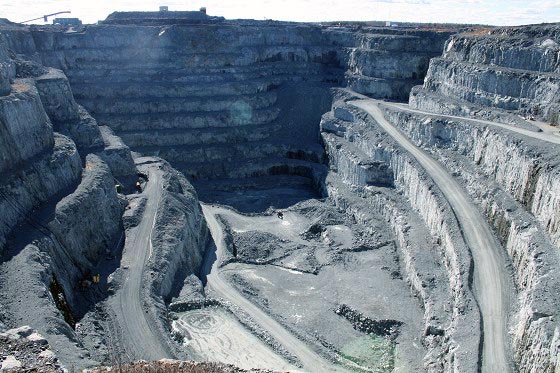Address
304 North Cardinal
St. Dorchester Center, MA 02124
Work Hours
Monday to Friday: 7AM - 7PM
Weekend: 10AM - 5PM
Address
304 North Cardinal
St. Dorchester Center, MA 02124
Work Hours
Monday to Friday: 7AM - 7PM
Weekend: 10AM - 5PM

Welcome to our comprehensive exploration of palladium mining! While palladium may not boast the same fame as gold or silver, its significance in the industrial world is undeniable. This journey will reveal the intricate processes of palladium mining, its applications, and its broader impact on society and the environment.
The method of mining palladium varies significantly based on geographic location and the type of ore present. The two primary methods are:
In regions like Russia, open-pit mining is prevalent. This method involves excavating a large pit in the earth’s surface to access the ore. The process includes extensive drilling, blasting, and removal of large amounts of earth.
In contrast, in South Africa, underground mining is more common. Here, miners delve deep into the earth to reach the ore, navigating through complex tunnel systems. This method is often more labor-intensive and requires advanced engineering techniques to ensure safety and efficiency.
The actual process of mining palladium is intricate and involves several stages. Initially, the ore is extracted from the earth, either from an open pit or underground mine.
Once the ore is obtained, it undergoes a series of processes including drilling, blasting, and transporting to a processing facility.
The goal here is to break down the ore to a manageable size to extract not only palladium but also other valuable metals that might be present. Let’s go into more depth on this process:
The journey from raw ore to usable palladium is complex and fascinating. It involves several key stages:
The production of palladium starts usually from the residue of the production of another metal, typically nickel. The chemical differences between the metals in this residue is used to separate them.
The first step is dissolving the residue in aqua regia, which will allow all the metals to form their nitrates.
If silver, gold, platinum or other precious metals are present, it is separated by forming silver chloride.
By adding different kinds of elements to the mixture, eventually all the elements are separated. Rhodium sulfate, ruthenium, osmium, palladium and others are extracted from the residue and compiled for commercial usage.
Palladium is extracted from platinum ores after platinum and gold have been removed. The metal is first converted to palladium chloride (PdCl2) and then purified as pure palladium.
Initially, the ore is crushed and then milled into a fine powder. This process is crucial as it liberates the palladium particles from the surrounding material, making them more accessible for further processing.
The milling process needs to be precise to ensure optimal recovery of palladium.
Following crushing and milling, the powdered ore is treated to increase the palladium concentration.
This often involves a process called flotation, which is quite intriguing. In flotation, chemicals are added to the powdered ore, causing the palladium particles to adhere to air bubbles.
These bubbles rise to the surface, allowing the palladium particles to be skimmed off for further processing.
This stage is critical in ensuring a high yield of palladium from the ore.
After the concentration stage, the palladium-rich material undergoes a series of refining processes to produce pure palladium:
The concentrated material is first smelted, which involves heating it to a high temperature to separate the palladium from other elements.
This stage can be quite complex, as it requires careful control of temperature and other conditions to ensure efficient separation.
Following smelting, a series of chemical processes are employed to further refine the palladium.
These processes may include solvent extraction, where specific chemicals are used to selectively dissolve and extract palladium, leaving behind other impurities.
The result of these refining processes is palladium in its purest form. It’s usually in the form of a sponge-like material, which can then be melted down and formed into bars, sheets, or other shapes for various uses.
The purity of this final product is critical, especially for applications in industries like electronics and automotive manufacturing, where high-quality materials are essential.
Palladium, with its unique luster and rarity, is not a metal you encounter every day. It is predominantly found in a select few regions around the globe, each with its unique geological story. Let’s pinpoint these regions:
Here’s a comparison table of the world’s largest palladium-producing countries, along with the hypothetical amount of palladium they produce each year and their respective shares of the world’s total palladium production:
| Country | Palladium Production (tons) | Percentage of World’s Production (%) |
| Russia | 81 | 40.5 |
| South Africa | 78 | 39.0 |
| Canada | 15 | 7.5 |
| United States | 12 | 6.0 |
| Zimbabwe | 9 | 4.5 |
Interestingly, palladium is often found alongside other metals, such as nickel, platinum, and copper, and is typically produced as a byproduct of mining these ores.
This unique occurrence makes its availability and production inherently linked to the mining activities of these other metals, adding a layer of complexity to its extraction and global supply.
Palladium is sourced primarily from two types of deposits:
The global landscape of palladium production is dominated by a few key nations:
Palladium plays a crucial role in various industrial applications, making it a highly valued metal, Here are the 2 most important uses for palladium:
Mining, by its very nature, has significant environmental impacts, and palladium mining is no exception. The process of extracting and refining palladium can lead to various environmental issues:
Beyond environmental impact, there are also ethical considerations in the mining of palladium:
Palladium mining is a complex and multifaceted industry with significant implications for the environment, economy, and society. As we delve deeper into each of these aspects, we gain a better understanding of the challenges and opportunities presented by this precious metal.